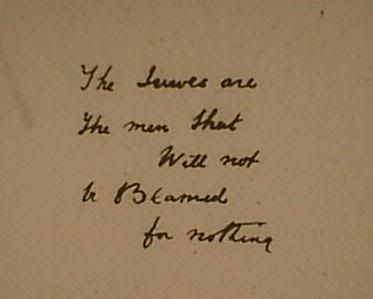Originally posted by Sam Flynn
View Post
All we know is that the writing was on the jamb, and in shoulder heigth, which fixes that particular location very precisely. The rag would have been below the writing, but not necessarily rigth below it. However, the more below it, the more precise the phrasing "above it on the wall" / "on the wall above it" will be.
The best,
Fisherman



Leave a comment: